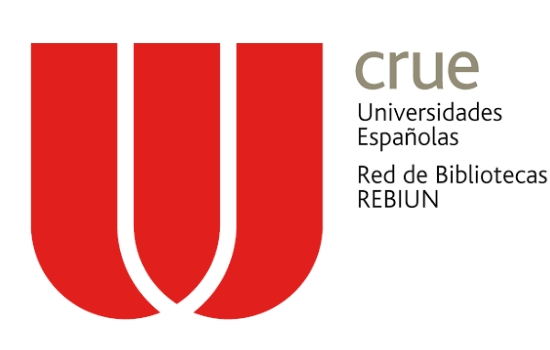La geometría en la arquitectura de la vivienda tradicional arhuaca
Keywords:
Cosmovisión, Cosmología, Etnogeometría, Prácticas Tradicionales, Arhuaco, Construcción de Vivienda, Worldview, Cosmology, Ethno-geometry, Traditional Practices, Home construction.Abstract
Resumen
Se presentan los resultados de una investigación que tenía como objetivo analizar los elementos geométricos utilizados por los miembros de la comunidad arhuaca de la Sierra Nevada de Santa Marta, Colombia, en el diseño y la construcción de su vivienda tradicional, la cual es un lugar sagrado, que está relacionada con su espiritualidad y conocimiento ancestral. Esta investigación utilizó la metodología de etnografía Vivencialista/Experiencialista y la información fue recolectada por medio de entrevistas y observación participante. Finalmente se encontró que para los integrantes de la comunidad arhuaca la construcción de su vivienda tradicional gira en torno a su cosmovisión, cosmogonía y cosmología, las cuales regulan el entorno natural, el ordenamiento universal y el ciclo vital respectivamente, que representan los tres niveles de significación del universo arhuaco. En consecuencia, para esta comunidad la vivienda es un lugar sagrado; el sitio de construcción es escogido por el mam s (sabio de la comunidad), sus dimensiones están asociadas con la altura del jefe de la familia y su base debe ser cuadrada porque según la cosmología arhuaca representa la figura perfecta, la cual se relaciona con el cuatro que es un número mágico para esta comunidad. Esperamos que este trabajo contribuya al estudio de la etnogeometría arhuaca y sus resultados aporten al desarrollo de currículos en varios contextos más pertinentes para las comunidades.
Abstract
is article presents the results of a study that analyzed the geometric elements used by members of the arhuaco community of the Sierra Nevada of Santa Marta, Colombia, in the design and construction of their traditional dwelling, which is a sacred place related to their spirituality and ancestral knowledge. is research utilized the Lived/Experienced ethnographic methodology and the information was obtained through interviews and participant observation. e results show that, for the members of the arhuaco community, the construction of their traditional home is based on their cosmovision, cosmology, and cosmogony, which regulate the natural realm, the order of the universe, and the life cycle, that respectively refer to the three levels of meaning in the arhuaco universe. In this way, for this community home is a sacred place; the construction site is chosen by the mam#s (community wise men), its dimensions are associated with the height of the head of the household, and its base must be square because according to arhuaco cosmology this represents the perfect figure, which relates to the number four—the magical number for the community. is research is a contribution to the study of ethnogeometry and its results can be applied to development of curriculum pertinent to the community in many contexts.
Downloads
References
Aroca, A. (2008). Una propuesta metodológica en etnomatemática. Rev. U.D.C.A Actualidad & Divulgación Científica, 11(1), 67-76.
Bishop, A. (1999). Enculturación matemática. La educación matemática desde una perspectiva cultural. Barcelona: Paidós.
Blanco-Álvarez, H. (2006). La Etnomatemática en Colombia. Un programa en construcción. Revista BOLEMA: Boletim de Educação Matemática, 19(26), 49-75.
D’Ambrosio, U. (1990). Etnomatemáticas. São Paulo: Editora Ática.
D’Ambrosio, U. (2005). Society, Culture, Mathematics and its Teaching. Educação e Pesquisa. Revista da Faculdade Educação da USP, 9(1), 99-120
D’Ambrosio, U. (2011). Educação para umasociedade emtransição. Natal: Editora da EFRN.
De la Hoz Molinares, E., Pacheco Fernández, J., & Trujillo Varilla, O. (2016). Números y universo arhuaco. Revista Latinoamericana de Etnomatemática, 9(2), 33-52.
Gerdes, P. (2003). Awakening of Geometrical Thought in Early Culture. MEP Publications. De la University of Minnesota Digital Conservancy.
Kraft, K. (2004). Textile Patterns and Their Epistemological Functions. Textile: The Journal Of Cloth & Culture, 2(3), 274-289.
Mestre, L., Izquierdo, J., & Torres, J. (2013, diciembre 22). [Entrevista con Luis Mestre, Juan Izquierdo y Jeremías Torres: Construcción de la Vivienda Tradicional Arhuaca]. Grabación en vídeo.
Padrón, J. (2007). Tendencias epistemológicas de la investigación en el siglo XXI. Cinta de Moebio 28, 1-28. Lima, Perú.
Zalabata, R. (2000). Cosmogonía Arhuaca, Memorias de la conferencia dictada a la Expedición Pedagógica Nacional, Pueblo Bello Cesar Editorial Universidad Pedagógica Nacional, Bogotá. Colombia.
Downloads
Published
How to Cite
Issue
Section
License
Once the article is accepted by the Latin American Journal of Ethnomathematics, the authors cede the rights to publish and distribute the text electronically, including storing it and making it available online.
The authors can distribute their own material without soliciting permission from the Latin American Journal of Ethnomathematics, whenever mentioning that the original version is found at http://www.revista.etnomatematica.org
Copyright © 2008, Latin American Journal of Ethnomathematics
All contents of the Latin American Journal of Ethnomathematics are published under the _ and can be used freely, giving credits to the authors and to the Journal, as established by this license.











